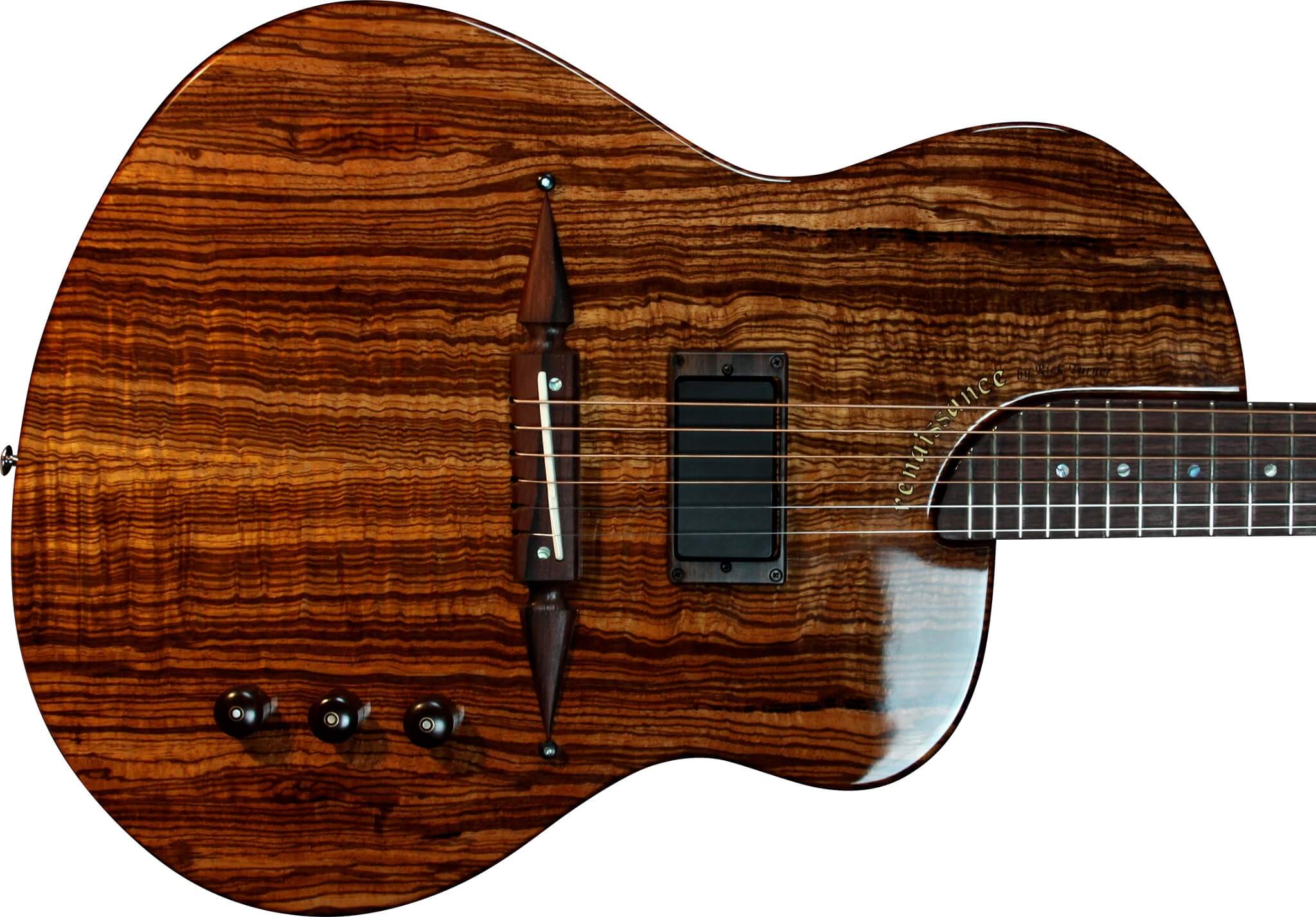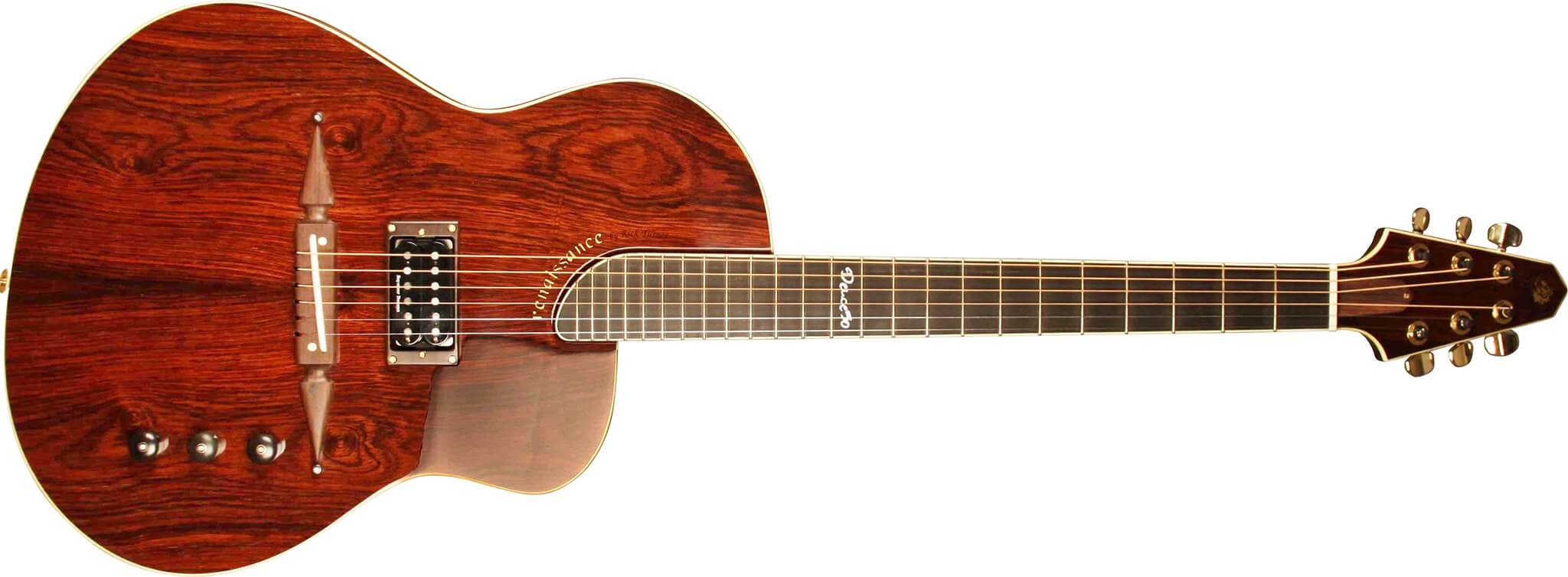The thinline body is built like a fine acoustic guitar, but with an added cedar center block to cut feedback. A Turner piezo bridge pickup feeds full-spectrum signals to an 18-volt D-TAR Eclipse pre-amp.

Acoustically Sound Design
Constructed like true acoustic instruments, with bent sides and a braced tone wood top and back, the Renaissance series truly represents the best way to achieve acoustic tone plugged in.
The construction feature that sets our instruments apart is the Western Red Cedar center block that prevents feedback and yet provides an acoustically live foundation for the D-TAR preamp and Turner pickup system.
Pick-Up Combo Bliss

All Renaissance Series instruments feature D-TAR Eclipse, 18-volt preamp and our own Turner coaxial piezo pick-up system which produces a full-frequency amplified acoustic tone.
The Deuce adds a customized Seymour Duncan StagMag pick up which optimizes the response of phosphor bronze strings. It uses a master tone and volume with a blend pot between the piezo and the magnetic pickup. The magnetic pickup is coil-split-able by pulling the tone pot. Stereo options available as well. This model can be wired for separate outputs for each pick up or blended through one output. It’s brilliant in sound, unique, and offers an expanded use for the Renaissance steel string. READ MORE BELOW
Compare Models
Electronics – We use a D-TAR pickup system that features a coaxial piezo polymer pickup element mounted in a curve bottomed slot in the bridge with a bone saddle transferring the string pressure variations from vibrations into the pickup which transduces those vibrations into an electrical signal. Because the pickup senses 360 degrees around it’s core, you get both direct string sound as well as the warmth of the wood of the body. Pickup installation is all about location, location, location, as well as the exact geometry of the saddle/pickup/bridge interfaces, and we have taken great care to optimize installation including tilting the saddle back at an angle of 7 degrees to better split the “break angle” of the string as it goes over the saddle and down into the body.
That pickup signal is matched to an 18 volt preamp which provides a bit of a signal boost as well as conditioning the pickup impedance to run down long cables and match the input characteristics of typical amplifiers. Earlier instruments used two 9 Volt batteries; newer ones use two “AA” cells with a 6X voltage multiplier circuit to achieve the same headroom as with the two 9 volt batteries.
